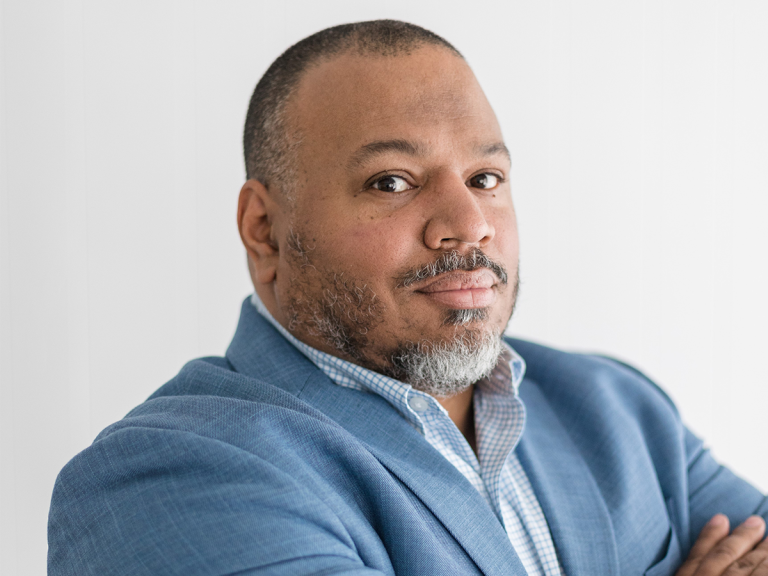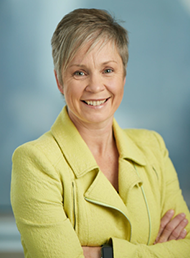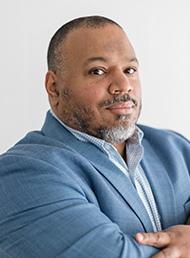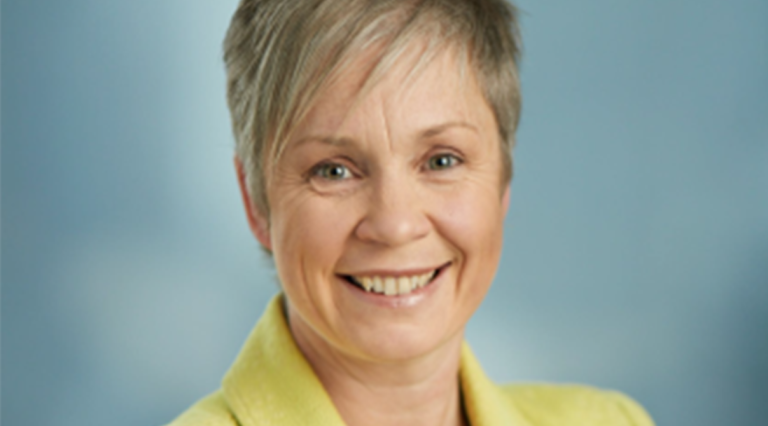Luxembourg PCCs will not work under current equalisation provision – Zigmann
The potential introduction of protected cell companies (PCC) in Luxembourg would not be successful under the domicile’s current equalisation provision arrangements, according to Yannick Zigmann, managing director of Luxembourg-based Risk and Reinsurance Solutions (2RS).
Captive Intelligence reported in April that the Luxembourg regulator was open to introducing PCCs in the jurisdiction if there is industry demand.
Luxembourg’s equalisation provision is a key advantage and differentiator for the domicile, allowing captives to build up large reserves for future claims which are tax deductible, but it is unclear how this would work in a PCC structure.
Zigmann believes there would need to be more flexibility in how the equalisation provision is applied and utilised by cell companies, if at all.
“I am not sure PCCs will work with the equalisation provision system in Luxembourg,” he told Captive Intelligence.
“How can you share your part of your equalisation provision? I do not see how you can do it.
“Having a PCC is difficult, because this means there is something you do not have, you do not have the premium or you do not have the capital.”
Speaking in an interview on episode 82 of the Global Captive Podcast Valérie Scheepers, head of the non-life and reinsurance department at the Commissariat aux Assurances, said the onus was on industry to present a real business case so rules could then be developed.
Following Scheepers comments, some of the largest captive managers on the continent told Captive Intelligence that improved choice and competition by allowing protected cell companies (PCCs) in Luxembourg could create greater demand for cell solutions in Europe.
European captive demand
Zigmann indicated that although there is a lot of interest in captive utilisation in Europe, it can sometimes be difficult to convince the key stakeholders within a company that setting up a captive is a good course of action for the organisation.
“We sit beside the captive prospects during the feasibility study, and as all the other market players, we can tell them that we have good actuaries and, we are able to provide them a business plan for five years, seven years, whatever they want, but the real added value is to help them to convince the legal, tax, and finance departments, that we are on their side,” he said.
“This is the most difficult. Risk managers know exactly why they need a captive, but the tax guy doesn’t understand the rewards from having a captive, so you must be absolutely clear that it is not a risk.”
Zigmann told Captive Intelligence that 2RS currently manages 72 captives in Europe.
He said that one reason for the success of 2RS is because its business model allows it to go directly to prospective clients rather than using an intermediary.
Although 2RS is a subsidiary of Siaci Saint Honore Group, Zigmann stressed the two companies are separate entities when it comes to their day-to-day operations.
“Of course, legally our shareholder is a broker, but our activity has nothing to do with them,” he added.
More market collaboration on cyber required – FERMA
The Federation of European Risk Management Associations (FERMA) has called upon the insurance industry to adopt a more collaborative approach to cyber insurance which balances the risk appetite of the market with the coverage requirements of corporate buyers.
FERMA has raised concerns that the cyber insurance market is evolving in isolation from the industries which it insures and wants to facilitate more constructive dialogue.
The Federation has proposed the development of a ‘COP-style’ annual cyber event, which would bring together key stakeholders to “develop and implement cyber resilience strategies of sufficient scope to address the myriad challenges of the digital age”.
Philippe Cotelle, vice president of FERMA and chair of its digital committee, said: “The corporate market recognises the criticality of cyber insurance as well as the need for the insurance sector to manage its potential exposure to cyber risk, particularly given the systemic risk it poses.
“However, it is also important to ensure that the product remains attractive and efficient for buyers.
“Recent decisions to restrict the scope of coverage have created uncertainty regarding the ability of insurance to meet the evolving cyber risk requirements of policyholders, and in particular for larger corporations which in France, for example, currently make up over 80% of the cyber premium.”
Typhaine Beaupérin, CEO and secretary general of FERMA, said: “To ensure the establishment of a robust and sustainable cyber insurance market for the long-term, it is imperative that all participants are contributing equally to its development.
“Improved dialogue will not only help ensure a product which is fit for purpose but also help build stronger relationships between cyber insurance buyers and the market itself.”
In order to combat capacity issues in the market, Marsh revealed at RISKWORLD that it will be launching a special purpose cyber reinsurance facility in the coming weeks, which will be made available to captive owners who are seeking additional cyber capacity.
Europe has also seen its first mutual formed for cyber with Mutual Insurance and Reinsurance for Information Systems (MIRIS) established in Brussels at the end of 2022.
MIRIS is domiciled in Belgium and will provide direct insurance. It can only accept members from the European Union and European Economic Area (EEA) with €25m of capacity being allocated for each member in its first two years of operation.
FERMA said that without more concerted dialogue between all parties, such as (re)insurers, brokers, buyers, regulators, and service providers, there is a risk that the appeal of the cyber product for corporate buyers may decline due to increasing exclusions and more restrictive coverage which are reducing coverage certainty.
“We need to approach cyber-related risks in a way that is commensurate with the size of the exposure that it creates,” Cotelle added.
“For many risk managers, cyberattacks pose one of the most significant and damaging threats to their organisation, while the systemic risk potential is recognised by all.
“By creating a COP-type event devoted to cyber resilience we can address this constantly evolving threat at the scale at which it needs to be addressed.”
Captive intelligence recently published a long-read detailing how a lack of capacity and high pricing in the cyber market are resulting in increasing captive utilisation for cyber risk.
Controversial Florida RRG legislation runs out of time
Florida’s legislative session has come to a close without Senate Bill 516, which would have impacted risk retention groups (RRGs) operating in the state, being presented for a final votes.
If passed into law, the Bill would have required an AM Best “A” rating and a minimum financial size of $100mn in capital surplus in order for an RRG to write commercial auto liability in Florida.
Despite the Bill failing to progress further Joseph Deems, executive director at National Risk Retention Association (NRRA), warned against complacency.
“Do not assume, however, that rigor mortis will be setting in anytime soon,” he said in an email to NRRA members and partners.
“This is no time for celebration, because discussion of resurrection of the bill is already underway.”
Deems has previously said the Bill aims to unlawfully regulate RRGs, and unlawfully discriminates against those that do not obtain such ratings from AM Best.
He believes the Bill could impact 96% of the RRGs registered in Florida.
The NRRA is now proceeding into “Phase 2” of its fundraising campaign, as it aims eliminate “discriminatory conduct” directed at RRGS, not just in Florida, but wherever believes it is appearing.
The organisation had previously announced three stages of fundraising to combat Senate Bill 516.
NRRA will now begin a “vigorous” campaign to educate regulators and legislators regarding the suggested financial unreliability of RRGs, which Deems said appears in the ubiquitous “pop-up” that shows every time someone researches a RRG through the Florida Office of Insurance Regulation.
NRRA is also planning to begin immediate discussions with entities and associations which have been detrimentally affected by the pop-up, which Deems said was the original motivation for the Bill.
“This false notion is perpetuated by the common misconception created when the word ‘authorized’ is improperly limited to mean companies which are “licensed and admitted” in the state,” Deems added.
“Of course, risk retention groups remain licensed and admitted in their states of domicile.
““Authorization” is therefore automatic in all states under the federal LRRA, which the majority of state and federal courts have held absolutely preempts the use of state laws to interfere with the ability of RRGs to operate in any non-domiciliary states.”
A small Florida trucking business recently told Captive Intelligence that it may have to shut-up-shop in Florida if the bill had passed.
“If this bill goes through, I might have to either close my doors or I might have to relocate to another state,” Linda Allen, CEO at Hardcore Trucking, said.
Tennessee licences 1,000th risk bearing entity, significant cell re-domestication
The Tennessee Department of Commerce & Insurance (TDCI) has licensed its 1,000th risk-bearing entity since the Captive Insurance Section began licensing captives.
Risk bearing entities includes all types of captives, as well as individual cells. At year-end 2022, Tennessee had 150 active captives plus 411 individual cells.
Captive Intelligence understands a large Bahamas cell company recently re-domiciled to Tennessee, bringing with it a significant number of cells.
In total, Tennessee risk bearing entities are now writing more than $2.4bn.
“This is a defining achievement for Tennessee and shows how the hard work of the domicile and everyone involved has helped to create dramatic growth over the last 12 years,” said Kevin Doherty, president of the Tennessee Captive Insurance Association (TCIA).
“It is also emblematic of the success of the public-private partnership in Tennessee pursuant to which the Department and the captive insurance industry have worked together to create one of the top U.S. domiciles.”
Formed in 1983, Distributors Insurance Company, a wholly owned subsidiary of the Tennessee Valley Public Power Association (TVPPA), is the oldest continuously operating association captive insurance company domiciled in Tennessee.
Douglas Peters, TVPPA President and CEO, highlighted that the captive was created to provide workers’ compensation, general liability, and auto insurance to TVPPA member distribution utilities.
“The parent company and most of our members are located in Tennessee, so it was natural for us to consider Tennessee as the domicile for our captive,” Peters said.
“In addition to our location, Tennessee’s innovative approach to captive insurance regulation caused Distributors Insurance to choose to domicile in Tennessee and, we have found no reason since to question that original decision.”
HDI Global aiming to become “major player” for US captive fronting
German industrial insurer HDI Global is targeting $100m in gross written premium by its new US fronting business within five to six years, expanding into auto, workers’ compensation and potentially cyber.
HDI launched its US Captive Solutions in January with Jason Tyng brought in from Amazon to lead the new unit. He is now vice president of the US Captive Solutions Group.
Tyng and Marco Hensel, senior vice president and chief underwriting officer for HDI Global in the US, discussed the insurer’s recent entrance into America’s booming captive fronting market, in an interview recorded at RISKWORLD last week for the Global Captive Podcast.
“We’re looking to be in the $100m frame as far as a gross written premium over the next five to six years,” Tyng said. “We want to be considered a major player.”
HDI Global is a well-known and established fronting option in the European market and it already works with European captives that are insuring US-based risks.
Hensel said it was after attending American captive conferences in 2022 that he realised they needed to target the US market for fronting.
“I found out very quickly that there is a big need in the US market for carriers that can front for captives,” he said on GCP #85.
“Coming back to Chicago with that information, we built a business plan, we got support from our US CEO, but also from our board in Germany to execute this business plan and to offer captive fronting solutions to US based clients.”
Tyng said the response since launching in January has been “overwhelming”.
“I don’t think that I’ve had a day off since the World Captive Forum,” he added.
“We’ve received submissions from just about everywhere that you can think of. The brand is well known globally, not so much in the US but we’re doing what we can to make that happen.
“And once they find out, it’s like we’ve opened the floodgates and it hasn’t let up.”
HDI is already offering US fronting for property and casualty, but plan to bring auto and workers’ compensation online in the coming months, while they are also seeing a lot of requests for cyber.
On cyber, Tyng believes that is because a captive can facilitate much broader coverage than is currently available.
“If you look at some of the coverage forms, there’s not a whole lot of coverage that’s being provided,” he said.
“You’re basically listing a bunch of exclusions. But when you put that kind of coverage into a captive, it now allows the insured to tailor a form and actually get the coverage they need.
“That’s definitely something that we’re going to continue to explore and take on and potentially we’d like to become a major player in the market for that as well.”
Marsh cyber reinsurance facility can help “weather the storm” for captive owners
Marsh will be launching a special purpose cyber reinsurance facility in the coming weeks, which will be made available to captive owners who are seeking additional cyber capacity.
Ellen Charnley, president of Marsh Captive Solutions, previewed the new innovation for attendees of the broker’s Captive Luncheon at RISKWORLD on Tuesday, 2 May and elaborated further in an interview for released in GCP #85.
“We are working on a special purpose vehicle that’s going to be available for captive owners to access and their captives to access a reinsurance mechanism for cyber,” Charnley told GCP.
“We think it’s going to be a terrific tool for companies to help weather the storm in the commercial cyber market, which has been quite rocky of late.
“It’s going to be available for companies that don’t necessarily even put cyber in their captive at all, but they want to have access to a facility for cyber.”
Captives continue to play a growing part in corporate cyber programmes as rates have increased and capacity has been hard to access on favourable terms.
Marsh’s statistics show there has been a 57% growth in captive cyber premium over the last two years, with more than $133m in cyber premium now under management.
The number of Marsh captives writing cyber has increased 75% in the last two years.
Listen to the full interview with Ellen Charnley on GCP #85 here, or or any podcast app. Just search for ‘Global Captive Podcast’.
Construction captive utilisation increases as insureds look to nullify rising costs
Risk Strategies acquires International Insurance Brokers
Specialty insurance brokerage and risk management firm, Risk Strategies, has enhanced its captive capabilities with the acquisition of International Insurance Brokers (IIB), a full-service retail agency based in Oklahoma.
Terms of the deal were not announced.
“We’re building out our central region presence as a specialist that brings a client-first, business savvy approach to risk and liability management,” said Steve Giannone, Risk Strategies central regional leader.
“International Insurance Brokers is a great fit for us and this approach to expanding our capabilities without compromise.”
In addition to offering captive expertise, IIB offers commercial and personal lines insurance, as well as a portfolio of business and individual financial products and strategies including financial services, retirement plans, life insurance and annuities.
IIB has a strong concentration of clients across Oklahoma, Kentucky, and Texas.
“As we looked to scale our success, we saw cultural fit as key,” said Caroline Sniff, IIB managing partner.
“Risk Strategies client-first, approach, emphasis on collaboration and depth and scope of resources make them the right fit for our clients and our people.”














